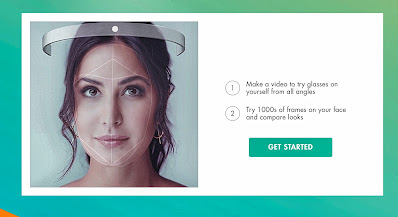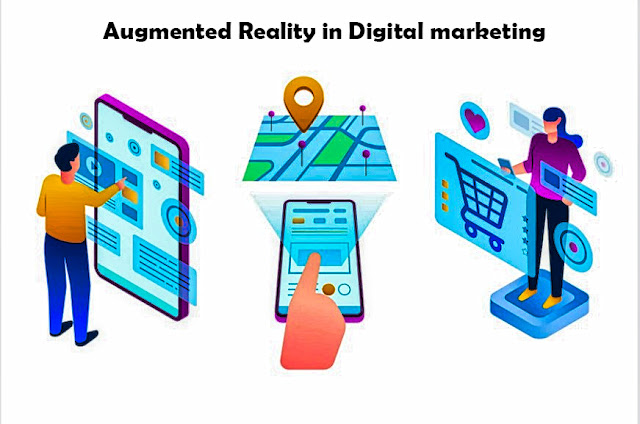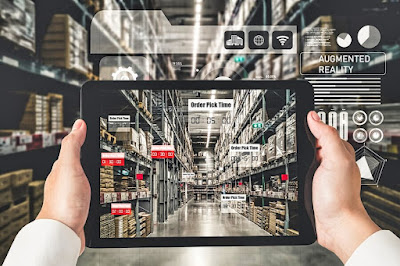Augmented Reality in Digital
Marketing
You might have seen the movie “They Live” released on the
year 1989. The thespian discovers eyewear, allowing him to see aliens in the
real world. The writer and director of the movie had shown augmented reality
through assumptions but didn’t know that will be possible soon. We all are
living in a technologically advanced era, where AR brings a drastic change in the
way users to feel, engage, and interact with the products or services. Technology
is removing the word inefficiency from humankind and this article is all about
the importance of Augmented Reality in this modern world.
What is Augmented Reality?
Electronic gadgets enhancing overlaying visuals using
digital elements onto the real world is known as augmented reality. Augmented
Reality gives an interactive experience to users. It is not a machine rather
it’s a technology that helps the human brain to do things better. Companies use
augmented reality to promote products and services by giving the best user
experience through the internet. Now I will take you through the importance of
AR in E-Commerce.
How can Augmented Reality increase sales in E-Commerce?
In this modern era, we all prefer online shopping.
What are the questions which will arise before you buy a
product?
Will this furniture
fit my living area? Does this eyewear suit me?
Furniture, footwear, eyewear, clothes are some examples
where you prefer to try and experience before you make a purchase. Augmented
reality eliminates these confusions and gives a real user experience through
overlaying visuals in the real world.
You might have used Lenskart to buy eyeglasses online.
Lenskart application has an AR feature that enables the user to upload a photo
or use a camera directly to check whether the eyeglass suits you in real life.
 |
| Image Source: "Lens kart" |
Augmented Reality gives a real experience through the
internet and this increases the purchasing desire of consumers. Even a consumer
who views a product by chance may even tend to buy the product online because
of the influence of AR. So, AR plays a crucial role and that’s the reason why
you should integrate AR into your E-Commerce business. Now we would go through
AR Reshaping Mobile Marketing.
Augmented Reality Reshaping Mobile Marketing.
Mobile allows the user to carry AR and use it on the go. Big
companies like Samsung, Apple, Microsoft, Amazon are working on prototypes of
AR integrated products. Companies know that the next big revolution in
electronic devices would be AR.
One successful AR tool in mobile as an example would be Google
Lens. Using Google Lens, you can search what you see in real life. Samsung has
AR applications like AR Zone, which allows users to create AR Doodles and
Emojis. Here are the 10 most Augmented Reality apps for Android and IOS. Houzz,
Ikea Place, You Cam Makeup, Giphy World, Google Lens, Augment, Roar, Amikasa,
Snapchat, and Wanna Kicks. Various AR platforms are available in the market. We
all spend time on mobile for Videos, How-to Guides, Case studies, Infographics,
E-books, Listicles, and many more. We
spend time on these contents to get information. Information from the internet
helps to improve many aspects of life. Now a person’s day itself starts with
the mobile and internet. Integrating AR into mobile would enhance the content
by bringing the topics in your blogs, videos, or images with an engaging
experience. It builds a strong relationship between the content viewer and the
product. AR gives an extra dimension with engaging experience in the real
world. Since mobile users are increasing daily, integrating AR into mobile
digital marketing would be a great idea.
Augmented Reality and Innovative Marketing.
The augmented reality market size valuation was USD 17.67
for the year 2020. A forecast for a compound annual growth rate of 43.8% is
expected from 2021 to 2028. Implementing AR in digital marketing would give the
privilege to stand out from the competitors. A good engagement through AR would
convert a viewer to the consumer by buying the product. AR has the power to
convert the hectic sales process into an easy one. Detailing the product
through AR with a 360-degree view and specification would turn the remarketed audience
to consumers.
Apps like Yelp and Wikitude already integrated AR to give
search results along with geolocation. These apps even provide reviews of the
products or services. This means Consumers can use AR to search your business
online. So optimize your website and make sure you are available on popular
directories for local listings and daily users.
Just Assume a person pointing his mobile to your business to
find a review or details about your business. To get accurate results we should
make our business and website optimized under SEO. This helps rank your
business and provide relevant details to the users through these services.
Uses of AR in digital marketing are:
·
Good Customer engagement through your website
would increase traffic and sales.
·
Online users will get a virtual experience and
satisfaction through AR
·
Printed ads and normal marketing techniques can
be converted into AR integrated digital marketing.
·
Integrating AR into Digital Marketing makes the
stressful sales process easy.
·
Geotagging through AR helps to find shop
locations.
·
Allowing potential customers to personalize
products through mobile AR will increase business.
·
Real-life experience through AR would increase
loyalty and brand awareness among consumers.
Conclusion
To conclude AR is the future for small- and large-scale
businesses. To be successful integrate AR into Digital Marketing and your
business to be innovative among competitors. Integrating AR would make you
successful and give users a new experience level in purchasing your product
online.














